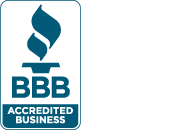What Nonprofits Need to Know
Form 990 is an essential tax form that all tax-exempt nonprofits in the United States must file annually with the Internal Revenue Service (IRS). This form not only helps the IRS ensure compliance with tax obligations but also provides transparency to the public, helping donors, partners, and other stakeholders understand a nonprofit’s financial health and operations. However, there are different types of 990 forms, and the one you file depends on your organization’s size and type.
In this blog, we’ll break down the four primary versions of Form 990: 990-N, 990-EZ, 990-PF, and 990-T, including what each form entails and when your organization would need to file it.
What is Form 990?
Form 990 is an annual tax form that nonprofits must submit to the IRS, providing crucial information on the organization’s mission, programs, and finances. It helps the IRS and the public evaluate whether the nonprofit is complying with its tax-exempt purpose. Filing the correct version of the 990 form is critical, as failing to file can result in penalties and even the loss of tax-exempt status.
1. Form 990-N (e-Postcard)
Form 990-N, often called the “e-Postcard,” is the simplest version of the 990 forms. It is designed for smaller nonprofits with gross receipts of $50,000 or less. It’s a quick and easy electronic filing that ensures even the smallest organizations are still transparent about their operations.
What Does It Include?
The 990-N requires minimal information, including:
- The organization’s legal name and mailing address
- Employer Identification Number (EIN)
- Tax year
- A confirmation that the organization’s gross receipts are $50,000 or less
Example:
A local animal rescue nonprofit that raises less than $50,000 annually through small donations and local fundraising events would file Form 990-N. The organization has limited assets and minimal financial complexity, so the e-Postcard provides a simple way to stay compliant with the IRS without needing to file detailed financial statements.
2. Form 990-EZ
Form 990-EZ is for medium-sized nonprofits with gross receipts less than $200,000 and total assets less than $500,000. It requires more information than the 990-N but is less complex than the full Form 990. This version is ideal for organizations that are growing but don’t yet meet the filing requirements for the full Form 990.
What Does It Include?
The 990-EZ includes more detailed financial and operational information, such as:
- Revenue and expenses
- Assets and liabilities
- Program service accomplishments
- Information on board members and key employees
Example:
A youth development nonprofit that brings in $150,000 per year through grants and program fees and has assets of $400,000 would need to file a 990-EZ. The organization’s financial operations are more extensive than those of smaller nonprofits, a 990-EZ allows the IRS and the public to get a clear picture of how the funds are used.
3. Form 990-PF
Form 990-PF is specifically for private foundations, regardless of their financial size or revenue. Private foundations differ from public charities in that they typically have a single primary source of funding (such as an individual, family, or corporation) and are often subject to different tax rules.
What Does It Include?
The 990-PF is designed to provide detailed financial information on the foundation’s investments and grants, and it includes:
- Detailed financial statements
- A list of grants and contributions made during the year
- Information on officers, directors, trustees, and key employees
- Calculations of net investment income and minimum distributions required by law
Example:
A family foundation that provides grants to education and environmental causes, funded primarily by a single donor, would need to file a 990-PF. Even if the foundation has a modest amount of assets, this form ensures that the IRS tracks its grantmaking activities and investment income to ensure compliance with foundation regulations.
4. Form 990-T
Form 990-T is required for nonprofits that generate unrelated business income (UBI) of $1,000 or more. Even though nonprofits are tax-exempt, they must pay taxes on income generated from activities that are unrelated to their tax-exempt purpose. These are considered “unrelated business activities,” and the income from them is taxable.
What Does It Include?
A 990-T includes sections for reporting:
- Gross income from unrelated business activities
- Expenses associated with generating that income
- Calculation of any taxes owed
Example:
A nonprofit hospital runs a parking lot open to the general public for a fee. Since the parking lot generates income that is not directly related to the hospital’s mission, the income would be classified as unrelated business income, requiring the hospital to file Form 990-T to report and pay taxes on the revenue.
Conclusion
Understanding the different types of Form 990 is crucial for nonprofits to maintain compliance and protect their tax-exempt status. Each form—whether it’s the 990-N for small organizations, the 990-EZ for mid-sized nonprofits, the 990-PF for private foundations, or the 990-T for unrelated business income—serves a specific purpose in ensuring transparency and accountability.
Need help with your nonprofit’s Form 990 filing?
At BryteBridge Nonprofit Solutions, we specialize in helping nonprofits of all sizes navigate IRS reporting requirements. Whether you’re unsure which form to file or need expert guidance to avoid penalties, we’re here to help. For more information, join BryteBridge Connect Membership for Live Bootcamps, Webinars, and classes or speak to a BryteBridge Consultant today by calling 877-857-9002 to ensure your nonprofit remains compliant and focused on its mission.



